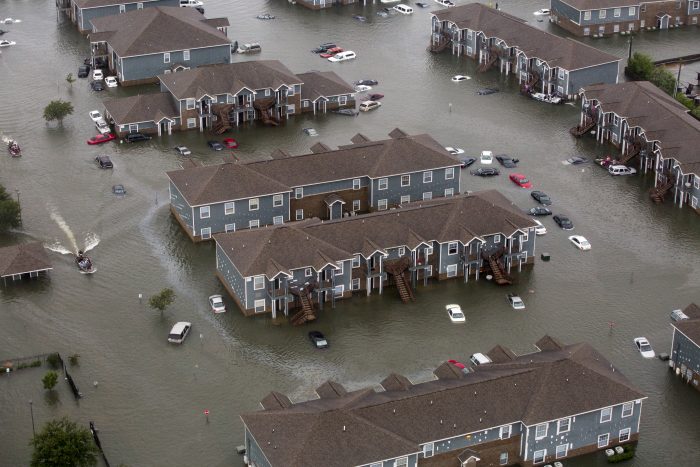Is Your Nonprofit Prepared for a Disaster?
Reprinted from a blog published on TechSoup’s website on Oct. 18, 2019. Though targeted to nonprofits, it contains important information for any organization. In addition, the Center for Disaster Philanthropy and TechSoup partnered on a comprehensive resource, The Resilient Organization: A Guide to IT Disaster Recovery, which covers topics such as back-up storage, website management […]

Reprinted from a blog published on TechSoup’s website on Oct. 18, 2019. Though targeted to nonprofits, it contains important information for any organization. In addition, the Center for Disaster Philanthropy and TechSoup partnered on a comprehensive resource, The Resilient Organization: A Guide to IT Disaster Recovery, which covers topics such as back-up storage, website management and recovery tips.
The only nonprofits prepared for a disaster are those that have already been through one. — Chris Schottland, executive director of United Saints Recovery Project
I spent a couple of days recently in New Orleans talking to a variety of nonprofits to learn more about their experiences and gather advice about preparing for disasters. Since Hurricane Katrina in 2005, nonprofits in New Orleans have become experts in making sure they can resume operations as quickly as possible after a catastrophic event. We also had similar conversations with nonprofits in Puerto Rico this summer as part of a broader TechSoup initiative to develop a tactical, useful set of resources for nonprofits to better prepare for — and bounce back from — a disaster.
In fact, thanks to support from FEMA and the Center for Disaster Philanthropy (CDP), we have been collecting feedback and best practices from organizations in Louisiana, Texas, Puerto Rico, California and Pennsylvania to understand the effects of natural (and less-natural) disasters. These include hurricanes, floods, wildfires, earthquakes, ice storms, ransomware attacks and broken water pipes above the server room.
Why is this so important? In disaster events, particularly natural disasters, nonprofits are often called to participate either directly or indirectly in initial response. Needs for human services increase, including food, water, housing, medical attention and counseling. First responders need places to operate (not to mention places to sleep and eat). Volunteers need to be trained and managed. Children need care while adults help others; animals need to be rescued.
The resiliency of communities affected by disasters is often tightly linked to the resiliency of their nonprofit organizations, and organizations that can rebound and engage quickly contribute greatly to the community’s overall resiliency and recovery.
Stories We’ve Heard
Here are some of the disaster-related horror stories we heard throughout our conversations.
- Hurricane floodwaters inundated one nonprofit office where all data was kept on local computers. The backup drive was also in the office and staff could not reach it for three weeks. Everything was lost.
- At one nonprofit, a cyberattack led to a $50,000 ransomware situation and the organization had to get volunteers to rebuild its systems and data by hand.
- Wildfires burned a nonprofit’s office complex to the ground, along with all their original documents.
- When staff members were evacuated in the face of an approaching disaster, they scattered and had to run the organization from 10 different locations.
And these are just some of the accounts of disaster experience we heard during our time in New Orleans. How easily would your organization rebound from disasters like these?
It’s Time to Get Prepared
I get it — preparing your organization for a disaster feels like an overwhelming amount of work that you don’t have time for right now. My own earthquake kit at home has not been updated since 2010. And without checking the expiration dates, I can safely say that it’s probably now more of a danger to my family than an actual earthquake would be. But through our conversations with organizations that have experienced the worst and are now disaster planning veterans, we’ve learned that getting prepared for a disaster can be done if you approach it in manageable, bite-sized chunks of work.
Putting together a full continuity-of-operations plan (COOP) involving your software and hardware, staff, physical locations and constituents is a good place to start. In fact, TechSoup is actively curating resources to help organizations get there — but in the form of small steps that will hopefully help you move in the right direction.
Our Disaster Planning and Recovery page is updated regularly with guides, checklists, online courses with recommended tools and services (we even have a few of our guides available in Spanish). But if even this seems like too much to absorb, below is our prioritized list of things you can do right now to get your disaster recovery plan in place:
- Create a “disaster box” or “go bag” that contains all the information you’ll need to continue your operations.
- Develop a communications plan that covers internal and external communications.
- Make sure your critical operational data is backed up regularly to a different location.
- Visualize the worst-case scenario and create contingency plans for your operations.
We’ll be writing blog posts on our website covering each of the topics above in the coming months. We’ll point to specific places where you can get help and guidance.
In the meantime, I’ve personally vowed to get my own earthquake kit updated by this Thanksgiving for the safety and security of my family. What will it take for your nonprofit to start taking steps to put some basic (or sophisticated) continuity-of-operations plans and systems in place?
More like this

The Time to Prepare is Now

